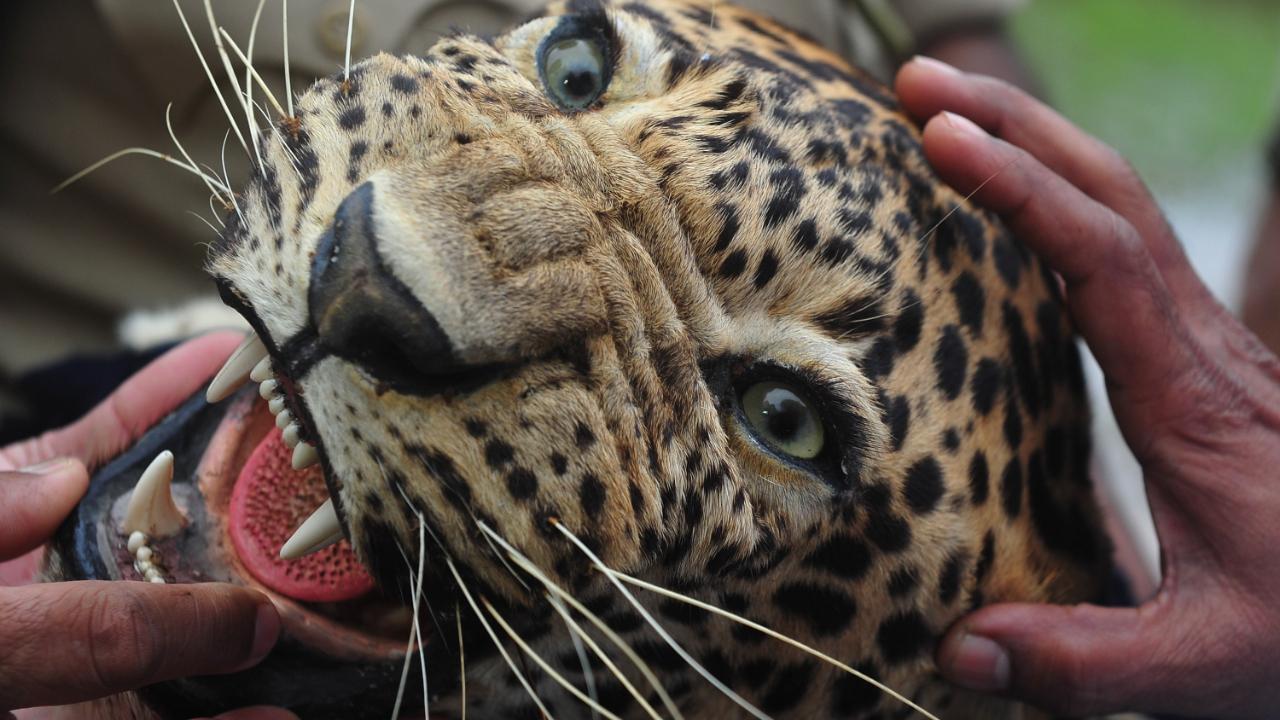The suburban areas connected with Sanjay Gandhi National Park have a higher incidence of wildlife as they lie at the periphery of the forest. On World Wildlife Day, Midday Online spoke to Pawan Sharma, a wildlife rescuer from RAWW, an animal welfare organisation in Mumbai, to learn about human-wildlife interaction

The World Wildlife Day is observed every year on March 3 to raise awareness about the wild fauna and flora across the globe. Photo Courtesy: AFP
The adjoining areas of Sanjay Gandhi National Park (SGNP) have recently witnessed instances of wildlife coming in contact with humans. Leopards have been spotted in schools at Mulund, Bhandup, Borivali, Andheri and in malls at Thane. No human casualty has been reported in these incidents.
“The movement patterns of these animals are based on their instincts and not intentions”, shares Pawan Sharma who works as a wildlife rescuer at the Mumbai based welfare organisation called RAWW (Resqink Association for Wildlife Welfare). According to Pawan, Leopards do not have intentions to harm humans and they wish to coexist with people.
The suburban areas connected with SGNP have a higher incidence of witnessing wildlife as they lie at the periphery of the forest. On World Wildlife Day, we reached out to RAWW to learn about human-wildlife interaction. In a telephonic conversation with Midday, Pawan shares few handy tips for people on how to deal with wildlife when they spot one.
Do not feed monkeys
Monkey menace has increased due to mistakes made by humans. People tend to feed monkeys on commands of local priests for religious purposes. This leads to changes in the eating habits of monkeys as they stop making efforts to find food themselves. Monkeys begin to approach humans for their meals thereby changing their natural instinct to hunt for food. Pawan shares that one needs to learn the difference between domestic and wildlife animals - Monkeys should not be fed in order to curb their menace in the cities.
Improve waste management in the city
It is imperative to manage waste lands in the city. In markets, often dust bins and dumping grounds lay open and uncovered. This invites Monkeys and Leopards to find their food in these spaces. Thus, they tend to return back to stray dump in search of food. To discourage this habit, waste need to be managed better to deter wildlife from seeking food in those areas.
Lights on in areas of Leopard sightings
In case of Leopard sightings, it is important to keep the places well-lit. The spaces need to be garbage-free in order to capture or rescue the Leopard. Often Leopards come to hunt dogs and not humans. Thus, it is important for people to understand the behavior of this animal. They should not get scared and try to kill the animal in a mob reaction. Rather, they should call wildlife rescuers to safely catch the animal and send it back into the wild.
Keep construction sites free of favourable conditions for birds
Birds may attack workers at the construction sites and wreak havoc upon them. In such cases, workers are advised to stop working till the bird has grown up and flown back to its natural habitat. It is advised to keep the construction sites free of favourable conditions for birds to their nesting and breeding habits. People should not offer food to birds, in particular, Owls, even if they make screeching sounds.
Dispose edible waste to curb snakes in residences
Snakes can be found all across the city. Due to monsoon, snakes come out of drainage sources with the purpose of hunting in residential areas. Drainage serves as a thriving habitat for snakes as they find food, shelter and mating partners there. To curb snakes from entering human habitats, it is essential to manage edible waste. Such wastes are consumed by rats and rodents which serve as food for snakes. Thus, the problem has to be curbed at the root level.
Do not feed an injured bird
Sometimes people feed an injured bird out of care and concern. What they don’t realise is that the bird might be dehydrated due to its injury. In this case, the food particles may get stuck in their food pipe which in turn can choke the bird leading to its death. One can contact their local vet to learn about efficient first aid when they encounter an injured bird.
Read More: How wildlife rescuers are preserving the endangered species of Maharashtra
 Subscribe today by clicking the link and stay updated with the latest news!" Click here!
Subscribe today by clicking the link and stay updated with the latest news!" Click here!










